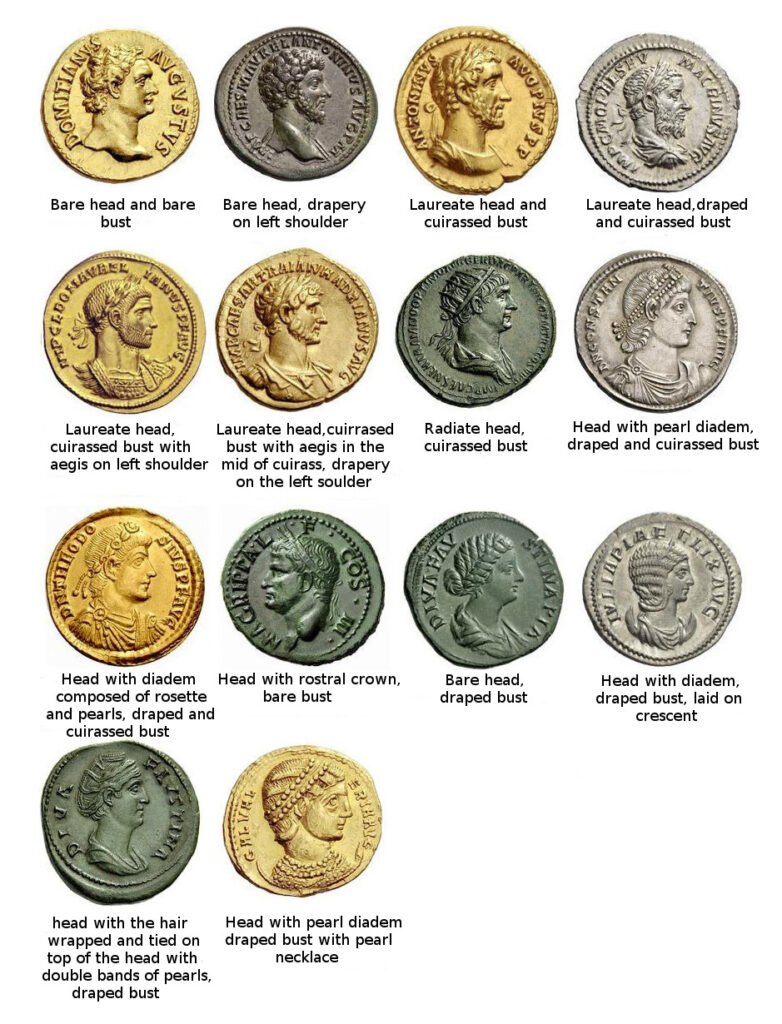Identify Roman Bronze Coins
Identify roman bronze coins it is a comprehensive guide that it requires knowledge and experience. However, in this article you will get the overview of how to identify roman bronze coins.
Roman bronze coins are fascinating relics from ancient history, offering insights into the Roman Empire’s economy, politics, and culture.
However, identifying these coins can be challenging due to their age, wear, and the vast variety of issues over the centuries. This guide will address several key questions to help collectors and enthusiasts identify and understand Roman bronze coins.
Is There an App to Identify Roman Bronze Coins?
Yes, there are several apps designed to identify Roman coins. These apps use image recognition technology to compare your coin with extensive databases.
Some popular ones include:
Coinoscope: This app allows users to take a photo of their coin and then match it against a large database of coin images. It’s useful for identify Roman bronze coins by their imagery and inscriptions.
Numista: While not specifically an app, Numista’s website is mobile-friendly and offers a vast database for coin identification. It is a valuable resource for identifying Roman bronze coins.
NGC Coin Explorer: Offered by the Numismatic Guaranty Corporation, this app includes a detailed database of Roman coins, including bronze issues, and provides information about their authenticity and value.
How Can You Tell if a Coin is Roman?
To determine if a coin is Roman, look for these features:
Portraits: Most Roman coins feature the portrait of an emperor or empress on the obverse (front). Identifying the ruler can help place the coin within a specific time period.
Legends: Roman coins typically have inscriptions in Latin.
Common inscriptions include the name and titles of the emperor, such as “IMP” (Imperator).
Symbols and Imagery: Roman coins often depict gods, goddesses, and other symbols of Roman culture. Identifying these can provide clues about the coin’s origin and era.
Size and Weight: Roman bronze coins come in various sizes, but they are typically larger and heavier than their silver counterparts.
How Do You Identify Roman Provincial Coins?
Roman provincial coins were minted in the provinces of the Roman Empire and often have distinctive features:

Greek Legends: Many provincial coins have inscriptions in Greek rather than Latin, reflecting the local language.
Local Imagery: Provincial coins often feature local deities, buildings, or symbols alongside the imperial portrait, aiding in identifying the coin’s specific origin.
Mint Marks: These coins may have unique mint marks indicating the city of origin, which can be crucial for identification.
How Do You Date Roman Coins?
Dating Roman coins involves examining several aspects:
- Emperor’s Portrait and Titles: The emperor’s name and titles can help narrow down the period. For example, “IMP” (Imperator) followed by a name indicates an emperor.
- Reverse Imagery: Specific types of reverse designs were issued during certain reigns, aiding in dating the coin.
- Mint Marks: Some coins have mint marks that indicate when and where they were minted, providing additional dating information.
How Can You Tell Where a Roman Coin Was Minted?
Mint marks and style are key to determining the origin of a Roman coin:
Mint Marks: Many Roman coins feature mint marks, often letters or symbols indicating the minting city. For example, “SM” stands for Sacra Moneta, and the following letters denote the city (e.g., “SMR” for Rome).
Style and Imagery: Coins from different mints might have stylistic differences. Comparing your coin to known examples can provide clues about its minting location.
How Can You Tell if Ancient Roman Coins Are Fake?
Detecting fake ancient Roman coins requires careful examination:
Style and Craftsmanship: Fakes often have crude or inconsistent engraving. Comparing your coin to verified examples can help identify inconsistencies.
Provenance and Purchase Source: Buy from reputable dealers who provide guarantees of authenticity. This is crucial for identifying genuine Roman coins.
Weight and Materials: weight is very important when considering identifying the coin. Material is a nother element that you need to look for.
Identify Roman bronze coins involves a blend of historical knowledge, careful observation, and sometimes technological assistance.
By examining inscriptions, imagery, and mint marks, and employing modern tools like identification apps and scientific analysis, collectors can gain a deeper understanding of these ancient artefacts.
Whether you are a seasoned numismatist or a curious beginner, the world of Roman bronze coins offers a fascinating glimpse into the past. Understanding the nuances of Roman coinage, from identifying Roman provincial coins to detecting fakes, enhances the appreciation and value of these historical treasures.
Leave a Reply